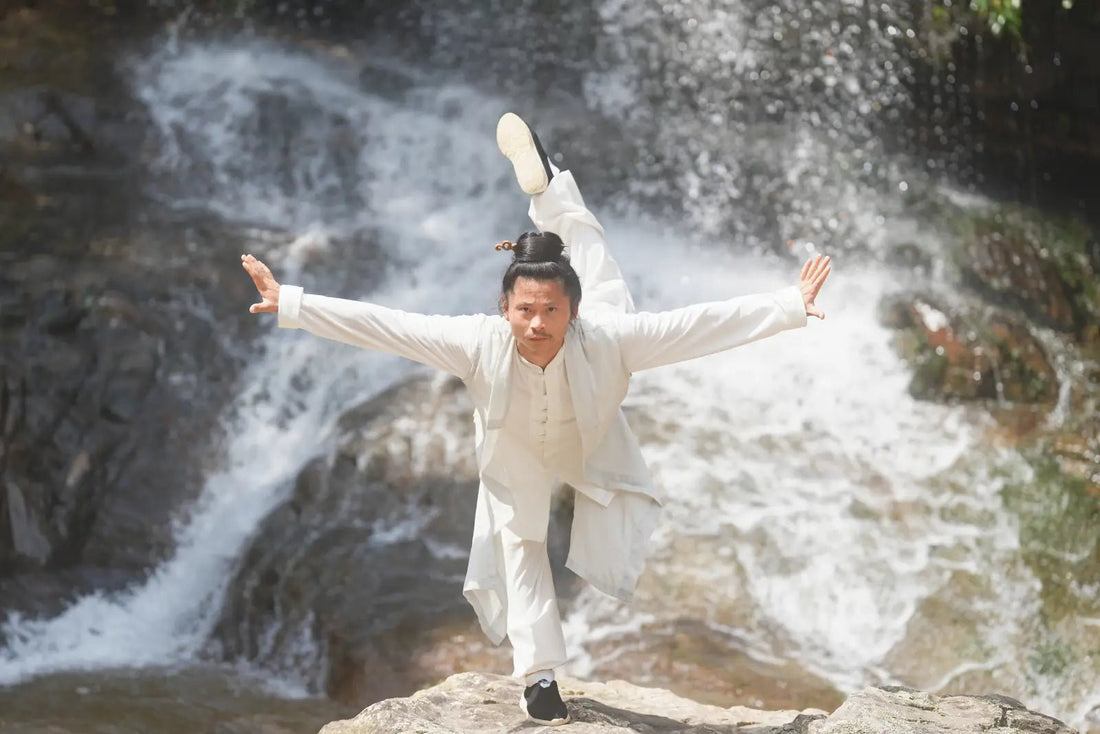
How to Tell a Good Tai Chi Practitioner from a Bad One
Share
Tai Chi is an art of subtlety. While many people can mimic the external movements of a form, it takes a discerning eye to recognize true skill, or "kung fu." A good practitioner's movements are not just beautiful; they embody the core principles of the art.
Here’s how you can tell if a person’s Tai Chi practice is genuinely good.
1. Look for Smooth, Rounded Movements
A skilled practitioner's movements are fluid and continuous, without sharp angles or abrupt stops. Tai Chi requires practitioners to move in arcs, circles, and curves. This isn't just about external movement—the internal energy, or Qi, must also flow in a rounded way. If the movements look like a series of disjointed, multi-sided shapes rather than a smooth, continuous circle, the practice lacks a crucial element of the art.
2. Observe the "Qi Position"
In Tai Chi, your "Qi" should sink to your abdomen and feet. When your Qi is low, your movements are grounded and correct. If your Qi is high, trapped in your chest, your stance will be unstable, and you may feel fatigued or short of breath after practice. A low "Qi position" is a sign of a strong, stable lower body and a correct method.
3. Examine the Body Posture (Shen Fa)
Correct body posture is the key to proper form. Look for these specific details:
- Shoulders and Elbows: Are the shoulders raised or hunched? Proper form requires shoulders to be relaxed and elbows to be dropped.
- Legs and Hips: When moving a leg forward, is the body sinking and rising? Or is it gliding smoothly? A good practitioner's body remains level. They should open their hips and execute footwork like a cat, placing their foot with intention and control.
- Stance Alignment: In fixed postures, check if the "three tips" are aligned: the tip of the nose, knee, and foot. A practitioner's knee and foot should be in relative alignment, with a rounded, open stance.
4. The Test of "Feeding Force"
Feeding force, or "Wei Jin," is the ultimate test of a practitioner's skill. From the outside, everyone's form may look similar, but a simple test reveals the truth.
- Test the Fixed Posture: In a posture like "Single Whip," stand in front of the practitioner and push their front hand backward. If they are solid and unmovable, their forward motion is correct. Then, stand behind them and push their hook hand forward. If they remain stable, their fixed posture is correct.
- Test the Moving Posture: If their movements remain perfectly stable and grounded when a force is applied, and they cannot be pushed off balance, it means they have grasped the true essence of Tai Chi.
A practitioner who can withstand this test has found the "True Transmission." Such a person is a true master, and learning from them will not only accelerate your progress but also improve your health with each passing day.
5. Don't Judge by Explosive Force Alone
Many beginners are impressed by flashy, powerful movements. But a person who practices explosive power alone may have no substance. A true master's power is subtle and can only be felt through a connected hand.
Just like a simple noodle stall versus a five-star restaurant, basic Tai Chi is easy to understand and appreciate. But the advanced level of Tai Chi is like a gourmet meal—it requires a refined palate and an inner understanding that not everyone can appreciate or even access. True Tai Chi is not about looking impressive; it's about being profoundly effective.
